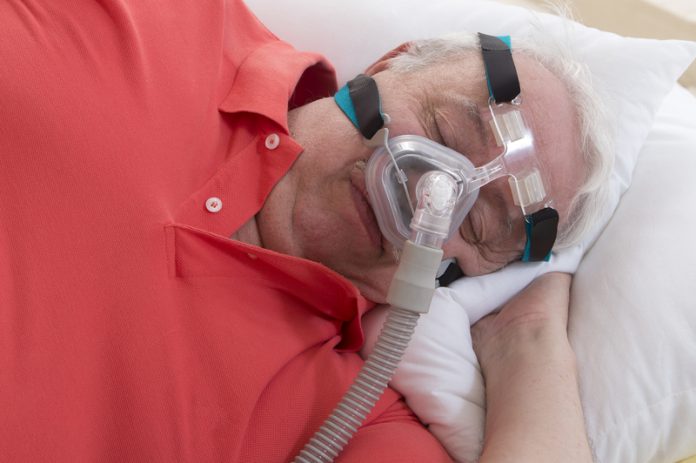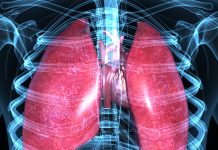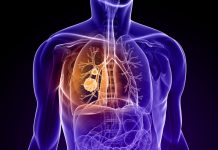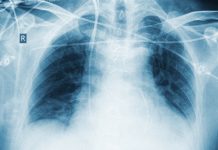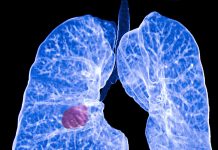Cecilia Van Cauwenberghe from Frost & Sullivan’s TechVision Group highlights technology interventions that address dyspnoea – focussing on point-of-care lung ultrasonography
The Murray and Nadel’s Textbook of Respiratory Medicine (Schwartzstein and Adams, 2016), etymologically defines dyspnoea from the Greek dys (painful, difficult) and pneuma (breath). Clinically, dyspnoea constitutes a medical expression related to the awareness of breathlessness or shortness of breath experienced by both normal subjects and patients suffering, from either respiratory or cardiovascular disease, such as chronic obstructive pulmonary disease (COPD), heart failure, advanced cancer and interstitial lung diseases, among many others.
It is important to remark that breathlessness or dyspnoea is generally defined subjectively (Bolzani et al., 2017a). The experience of breathing discomfort involves qualitatively individual perceptions that may vary in intensity. Just to make a small but important difference, breathlessness indicates the patient’s perspective according to daily experience; dyspnoea applies to the vital signs of the underlying medical condition. Such a patient’s perspective or experience also entails interactions among multiple physiological, psychological, social and environmental factors, intervening all together in the form of a secondary physiological and behavioural response.
Due to its causes may derive from multiple sources, no precise data on the prevalence of dyspnea is available (Bolzani et al., 2017b). Meta-analyses insinuate a worldwide prevalence of 10% for COPD in adults older than 40 years exhibiting dyspnea as a cardinal symptom. Dyspnea in children, on the other hand, has been reported including its psychosocial impact (Lands, 2017).
Such a subjectivity of dyspnoea is precisely one of the main challenges faced in both diagnosis and treatment. Its causes fall into three broad categories: respiratory system dyspnea, cardiovascular system dyspnea and dyspnea due to atypical causes. Moreover, different types of dyspnea can be cited according to its duration: acute (sudden appearance and persistence over hours to days) and chronic (gradual appearance and persistence during weeks or months.
Different types of dyspnea are also observed in terms of activity: physical exertion dyspnea (unpredicted dyspnea at rest indicating a potentially serious medical disorder), intermittent dyspnea (usually due to cold air or allergy suggesting asthma), work-related dyspnea (potentially indicating occupational asthma), upper respiratory tract infections dyspnea (suggesting COPD), orthopnoea (when lying down, usually in the supine position, typically associated with heart failure), paroxysmal nocturnal dyspnea (also indicating heart failure), trepopnoea (associating shortness of breath with lying on the left or right side) and platypnoea (only in the upright position), among other types.
Therefore, determining the cause of dyspnea is a task of vital importance in which first symptoms appearance, onset, character, duration, interval, periodicity and acuteness of the symptoms play all distinctive roles.
Clinical interventions of dyspnoea
Primary assessment
Primary assessment starts with a physical examination. Hence, when receiving a case of dyspnea, important clues about its underlying causes can be provided by assessing vital signs. Tachycardia or accelerated pulse, for instance, may indicate anemia, heart failure, or pulmonary embolism. Peripheral edema or distention of the jugular veins may be also associated with heart failure, as well as, cardiac whispers may be related to cardiac valvular disorders. Conversely, decreased breath sounds and wheeziness may suggest COPD.
Conventional testing implies pulse oximetry, complete blood count, basic metabolic panel, chest radiography, electrocardiography (ECG) and spirometric studies, which either reveal or discharge the existence of signs of heart failure, arrhythmias, pneumonia and interstitial lung disease or lung tumour. Evidence of asthma and pulmonary embolism may exhibit normal radiographic findings; however, spirometry is a supportive study for detecting airflow obstruction. Additional studies comprise echocardiography, computed tomography (CT scan), ventilation-perfusion scanning, ultrasound and stress testing.
Primary measures in blood analysis may involve brain natriuretic peptide (BNP), a cardiac neurohormone secreted by the myocardium and its prohormone, N-terminal pro-BNP, which in patients with dyspnoea due to heart failure, their concentrations are increased, thus helping physicians to discern between respiratory and cardiovascular causes of dyspnoea. Another biomarker frequently used in D-dimer, associated with fibrin degradation in the blood and pulmonary emboli.
Multidimensional diagnostics approaches
Dyspnoea can be defined as a multidimensional experience. Therefore, there is no a comprehensive, validated instrument capable of embodying the multidimensional nature of dyspnoea (Banzett and Moosavi, 2017). Now, there are two multidimensional instruments: the Dyspnoea 12 (D-12) and the Multidimensional Dyspnea Profile (MDP) intended to address this challenge.
D-12 was designed to provide a single global score embracing the affective dimension. This approach is easy to apply to a variety of patient groups and accessible for patients waiting to be seen in a clinic. It attempts to avoid under- or over-medication based on unidimensional scales that ignored the affective aspect of dyspnoea.
MDP was elaborated to deliver a better characterisation of the complex dyspnoea experience, also matching laboratory and clinical. Patients first of all, rate the overall breathing as a scale indicator of discomfort or unpleasantness and then rate the intensity of a set of individual sensory descriptors. The approach also comprehends a measurement model for pain and a list of negative emotions, in addition to the synonymous sensory descriptors and sensation categories for clustering and principal components analyses.
Breathlessness management
Suitable management to relieve breathlessness in advanced diseases may require both pharmacological and non-pharmacological interventions (Bolzani et al., 2017c). Some pharmacological interventions refer to opioids, benzodiazepines and oxygen. Nevertheless, the use of drugs to treat breathlessness, especially if the underlying cause is not deeply understood, is limited due to potential adverse side effects and the extreme care needed for doses titration.
Non-pharmacological interventions for the relief of breathlessness may be focused on three categories: respiratory, related to inefficient breathing observed due to dysfunctional breathing patterns and increased respiratory rate; cognitive-emotional, associated with patient feelings around the sensation of breathlessness generating anxiety, distress, feelings of panic and thoughts about dying; and physical, related to deconditioning of limb, chest wall and accessory muscles as a result of dyspnoea.
Non-pharmacological interventions focused on respiratory approaches attempt to relieve breathlessness through breathing training, handheld fan and chest wall vibration, among many other resources (Bolzani et al., 2017a). Non-pharmacological interventions concentrated on cognition or emotion to relieve breathlessness use distractive auditory stimuli (music), meditation/relaxation (e.g. visual or guided imagery; progressive muscle relaxation), biofeedback, mindfulness- based stress reduction, yoga therapy and psychological therapy (e.g. cognitive behavioural therapy) (Bolzani et al., 2017b). Non-pharmacological interventions based on physical functioning may involve pulmonary rehabilitation and nutrition support (Bolzani et al., 2017c).
Technology interventions of dyspnoea
Point-of-care lung ultrasonography
The influence of age, multimorbidity, cognitive and motor impairment is essential for the accurate diagnosis of dyspnea (Vizioli et al., 2017). In fact, lung ultrasound (LUS) has been widely recognised as a relevant study in the differential diagnosis of dyspnea in internal medicine (Perrone et al., 2017). Being dyspnoea one of the most recurrent causes of admission in internal medicine wards (Wang et al., 2017), LUS at the bedside provides high sensitivity and specificity, thus helping clinicians to manage medical resources. In fact, a wider use of a portable technique in the internal medicine wards is significantly gaining attention. Bedside LUS has demonstrated to notable contributions to the differential diagnosis of dyspnoea, exhibiting higher sensitivity and specificity than any other technique. Its application not only is restricted to emergency rooms, but also to sub-acute internal medicine areas.
Radiologic and laboratory results may cause disproportionate delay previously adequate therapy is indicated. Therefore, the use of an integrated point-of-care ultrasonography (PoCUS) approach may represent the ideal solution by offering shorter time needed to formulate a diagnosis, while preserving an appropriate safety profile (Zanobetti et al., 2017).
This non-invasive intervention may involve the ultrasound evaluation of the lung, heart and inferior vena cava, in addition to conventional tests, which can be performed in parallel.
PoCUS has shown results for the diagnosis of acute coronary syndrome (ACS), pneumonia, pleural effusion, pericardial effusion, pneumothorax and additional causes of dyspnea, with remarkable accuracy when compared to conventional examinations. Indeed, PoCUS may result significantly more sensitive, especially when the cause of dyspnea is associated with heart failure.
Furthermore, patients can be stratified for a more detailed assessment, in which PoCUS denotes a feasible and reliable diagnostic approach to the patient with dyspnea, additionally involving a considerable reduction in time to diagnosis. In agreement with these approaches, adjacent technologies such as wearables, microfluidics, emerging sensors and artificial intelligence, are converging toward the development of new products focused on the complexity around dyspnoea.
Brief market landscape considerations
According to Frost & Sullivan investigations (Das, 2016), point-of-care testing (POCT) constitutes an integral part of the healthcare market. Indeed, POCT is promptly evolving into a preferred testing mode in Europe and North America. Frost & Sullivan found that POCT, a particularly PoCUS, displays unparalleled growth opportunities for a cross-section of players, ranging from original equipment manufacturers (OEMs) to data integrators to technology vendors.
The stakeholders need to be well-informed about the challenges posed by the industry to design intelligent growth strategies – to innovate their business models and capitalise on the transformation that the market is undergoing and principally, to deliver real-world solutions to unmet medical needs such as dyspnoea. Different technological building blocks are smartly contributing to the better clinical translation and functionality of powerful tools to diagnose dyspnoea.
Acknowledgements
I would like to thank all contributors from industry involved with the development and delivery of this article and Frost & Sullivan’s staff from the TechVision Group.
Further reading
Banzett, R.B. and Moosavi, S.H., 2017. Measuring dyspnoea: new multidimensional instruments to match our 21st-century understanding.
Bolzani, A., Rolser, S.M., Kalies, H., Maddocks, M., Rehfuess, E., Swan, F.,
Gysels, M., Higginson, I.J., Booth, S. and Bausewein, C., 2017a. Respiratory interventions for breathlessness in adults with advanced diseases. The Cochrane Library.
Bolzani, A., Rolser, S.M., Kalies, H., Maddocks, M., Rehfuess, E., Hutchinson, A., Gysels, M., Higginson, I.J., Booth, S. and Bausewein, C., 2017b. Cognitive-emotional interventions for breathlessness in adults with advanced diseases. The Cochrane Library.
Bolzani, A., Rolser, S.M., Kalies, H., Maddocks, M., Rehfuess, E., Gysels, M., Higginson, I.J., Booth, S. and Bausewein, C., 2017c. Physical interventions for breathlessness in adults with advanced diseases. The Cochrane Library.
Das, R., 2016. Western Europe Point-of-Care Testing (POCT) Market – Integration, Miniaturization and Consumerization will Accelerate Growth in the Future. Frost & Sullivan Market Engineering. http://www.frost.com/mc01.
Lands, L.C., 2017. Dyspnea in Children: What is driving it and how to approach it. Paediatric Respiratory Reviews.
Perrone, T., Maggi, A., Sgarlata, C., Palumbo, I., Mossolani, E., Ferrari, S., Melloul, A., Mussinelli, R., Boldrini, M., Raimondi, A. and Cabassi, A., 2017. Lung ultrasound in internal medicine: A bedside help to increase accuracy in the diagnosis of dyspnea. European journal of internal medicine, 46, pp.61-65.
Schwartzstein, R.M. and Adams, L., 216. Murray and Nadel’s Textbook of Respiratory Medicine, Sixth Edition.
Vizioli, L., Forti, P., Bartoli, E., Giovagnoli, M., Recinella, G., Bernucci, D., Masetti, M., Martino, E., Pirazzoli, G.L., Zoli, M. and Bianchi, G., 2017. Accuracy of Lung Ultrasound in Patients with Acute Dyspnea: The Influence of Age, Multimorbidity and Cognitive and Motor Impairment. Ultrasound in Medicine & Biology.
Wang, Y., Shen, Z., Lu, X., Zhen, Y. and Li, H., 2017. Sensitivity and specificity of ultrasound for the diagnosis of acute pulmonary edema: a systematic review and meta-analysis. Medical Ultrasonography.
Zanobetti, M., Scorpiniti, M., Gigli, C., Nazerian, P., Vanni, S., Innocenti, F., Stefanone, V.T., Savinelli, C., Coppa, A., Bigiarini, S. and Caldi, F., 2017. Point-of-care ultrasonography for evaluation of acute dyspnea in the emergency department. Chest.
Cecilia Van Cauwenberghe, Ph.D., MSc, BA
Associate fellow and senior industry analyst
TechVision Group, Frost & Sullivan
Tel: +1 210 678 3623
Cecilia.VanCauwenberghe@frost.com
www.twitter.com/Frost_Sullivan
Editor's Recommended Articles
-
Must Read >> Lung cancer death rates may overtake breast cancer
-
Must Read >> Living with lung disease in the UK
-
Must Read >> NHS approves new ‘life extending’ lung cancer drug
-
Must Read >> Now is the time to finally prioritise lung cancer
-
Must Read >> Air quality in working environments


